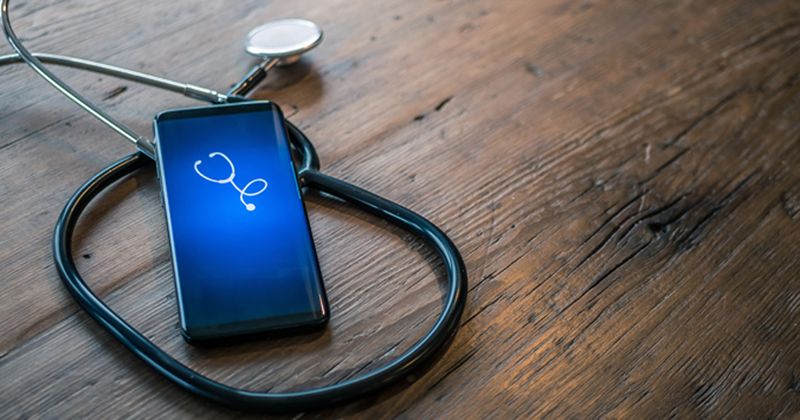Blood
Home blood pressure measurements ‘missed opportunity’ to tackle CV risk
October 20, 2023
3 min read
Key takeaways:
- Blood pressure measured at home is more effective than clinic BP for diagnosing hypertension.
- Self-measured BP paired with telemedicine can improve BP control and medication adherence.
Out-of-office BP measurements provide the clearest picture of CV risk for patients and are the ideal method to diagnose and treat hypertension, yet most clinicians still rely on inaccurate clinic readings, according to a speaker.
The diagnosis and management of hypertension have been based primarily on the measurement of BP in the clinic, Daichi Shimbo, MD, a cardiologist and professor of medicine in the division of cardiology at Columbia University Irving Medical Center, and co-director of the Columbia Hypertension Center, said during a presentation at the Cardiometabolic Health Congress. Yet BP may differ considerably when measured outside of the office setting, and higher out-of-office BP is associated with increased CV risk independent of office BP, Shimbo said.
Image: Adobe Stock
The problem extends far beyond the clinic, Shimbo said. Average systolic BP was already on the rise across all age groups even before the COVID-19 pandemic, when BP control worsened considerably.
“To me, this is an emergency and we need to hit the reset button,” Shimbo said. “We are going in the wrong direction.”
Consider home BP measurements for your patients
In clinical practice, BP is typically not measured accurately, Shimbo said. Even when proper BP measurement steps are followed, the readings are likely not an accurate reflection of a person’s average BP. A delivery driver, for example, would likely have much higher BP outside the office when lifting heavy boxes vs. sitting still inside a physician’s office, Shimbo said.
“We spend a lot of time in the clinic measuring BP, but does it really matter what someone’s BP is in the office setting?” Shimbo said. “Are we using office BP, even when measured well, as an estimate of the person’s BP during everyday life, what I call ‘true’ BP?”
Home BP offers several key advantages — namely, it is less reliant on clinically trained personnel and offers many more readings than in the office.
“In the past, we would send nurses, physicians, researchers to the person’s home and measure BP there,” Shimbo said. “Today, we send the patient a device and they self-monitor their own BP, typically with an oscillometric device. You can do this over days or weeks and really get a good estimate of what is happening.”
Most guidelines, including the 2017 American College of Cardiology/American Heart Association guidelines, endorse out-of-office BP monitoring for the routine diagnosis and management of hypertension, Shimbo said.
“This is a class I indication; this is not some strange methodology that we should be considering or looking at pie in the sky,” Shimbo said. “This is actually endorsed by guidelines.”
Yet, most clinicians are not routinely using home BP monitoring in their practice, Shimbo said.
“Even if you [measure] office BP well, you still are missing out on the complete risk prediction you get from out-of-office monitoring,” Shimbo said.
Differences between home, office BP
Hypertension thresholds are slightly different for BP measured out-of-office compared with the clinic, Shimbo said, who noted that BP measured at home will be slightly lower if using the threshold of 140/90 mm Hg. The threshold of 130/80 mm Hg can be applied to home or office.
Ambulatory BP has been used for about 50 years, whereas home BP is a recent phenomenon, Shimbo said. However, there is no evidence that one method is superior to the other, and most experts agree the methods are similar, Shimbo said. For that reason, the AHA and the AMA jointly endorsed home BP monitoring in a policy statement in 2020.
“The home [BP] monitors are everywhere; you can buy them on Amazon,” said Shimbo, who chaired the writing group for the policy statement. “We thought that, for practicality’s sake, it was probably better to rely on home monitoring for BP control. There is a lot of evidence with trials showing that if you just give someone a home monitor compared with usual care, you can actually see reductions in BP at 6 months.”
Co-interventions, which can include education, communicating treatment decisions and medical management, are also associated with further decreases, Shimbo said.
“If you are not doing this it is a missed opportunity, even after the pandemic is over,” Shimbo said. “There is no excuse. … We have the technology and we should use it.”
Reference:
Sources/Disclosures
Collapse
Shimbo D. Technology & digital health in CVD and CVD risk reduction. Presented at: Cardiometabolic Health Congress; Oct. 18-21, 2023; Boston.
Disclosures:
Shimbo reports no relevant financial disclosures.


